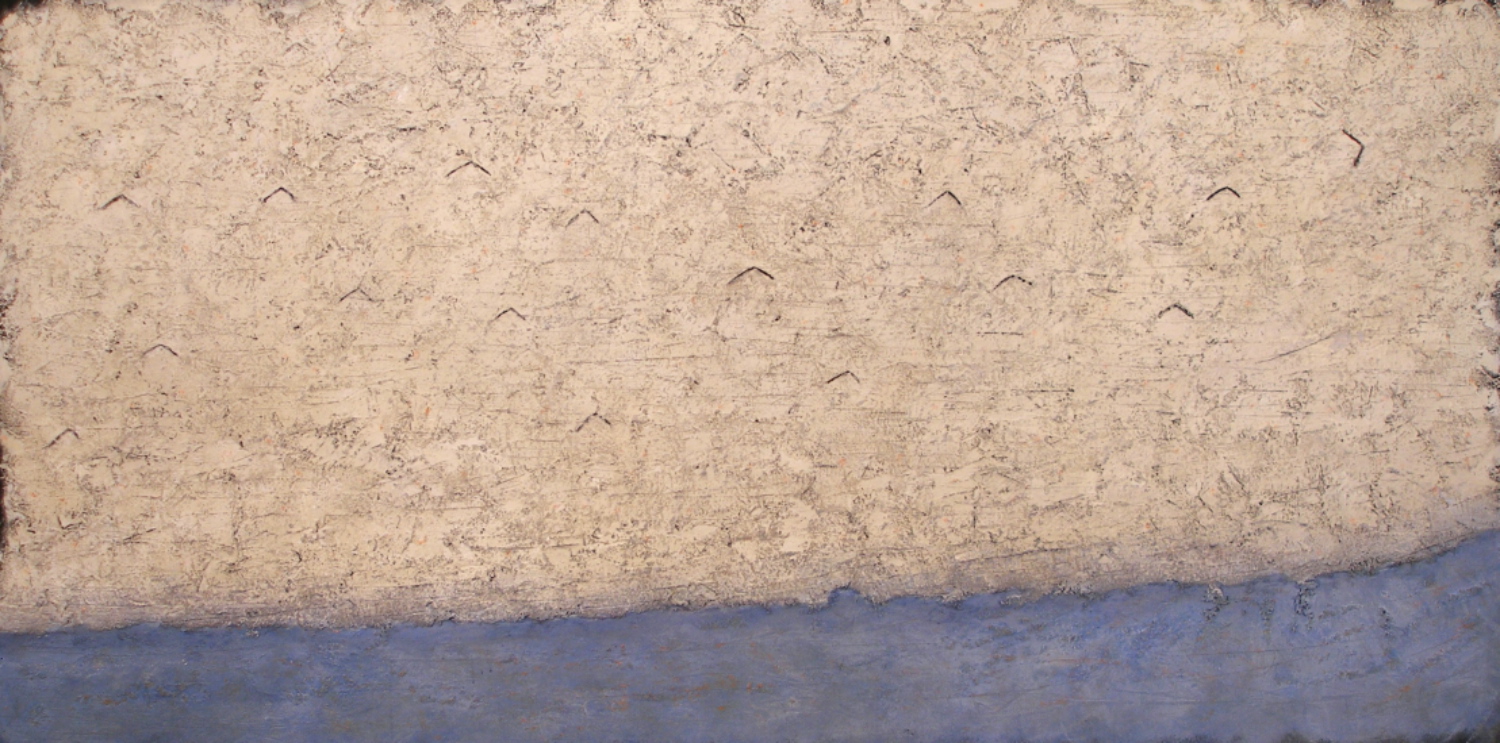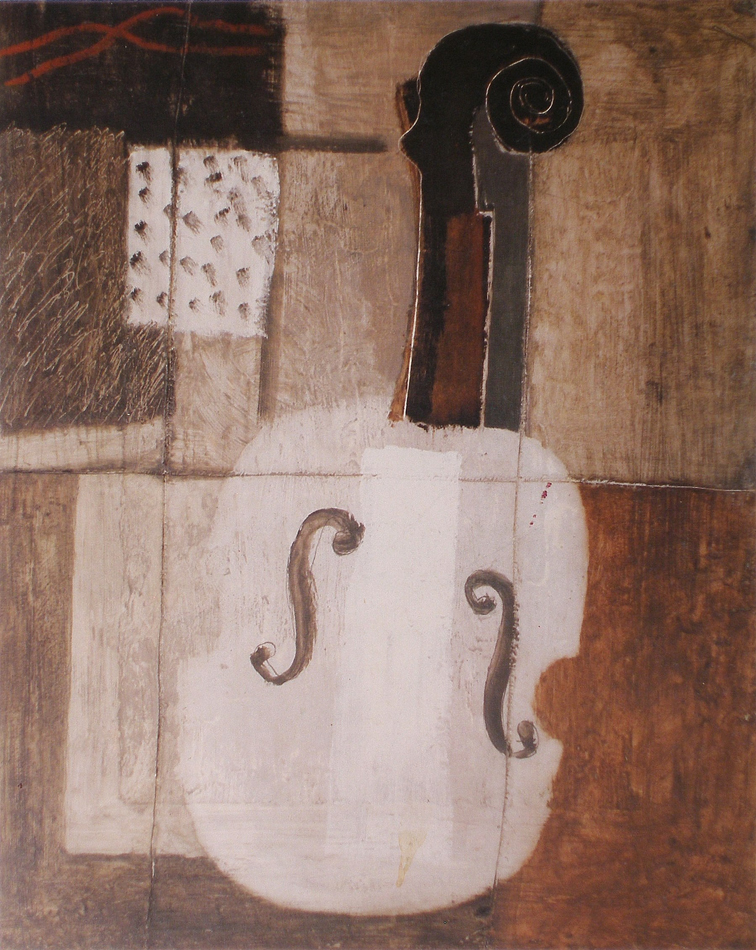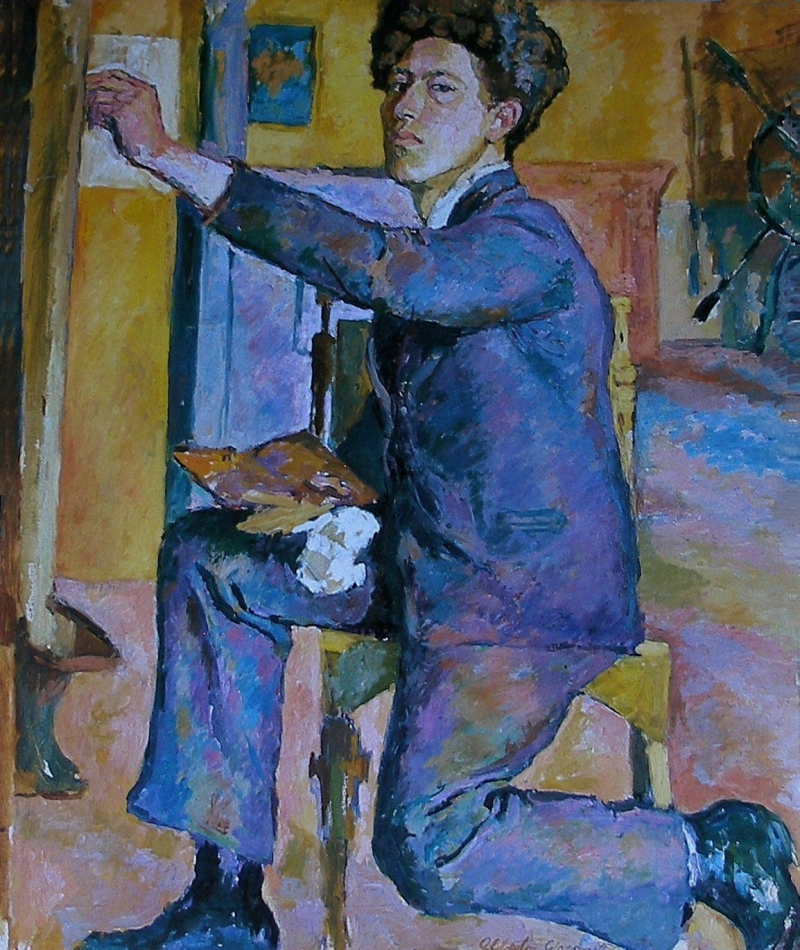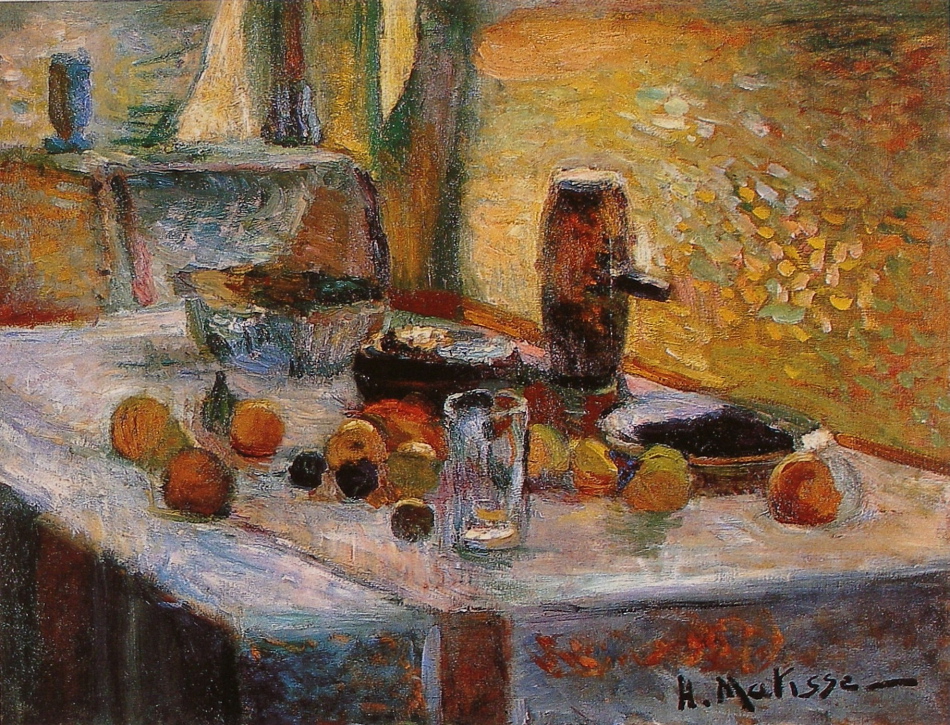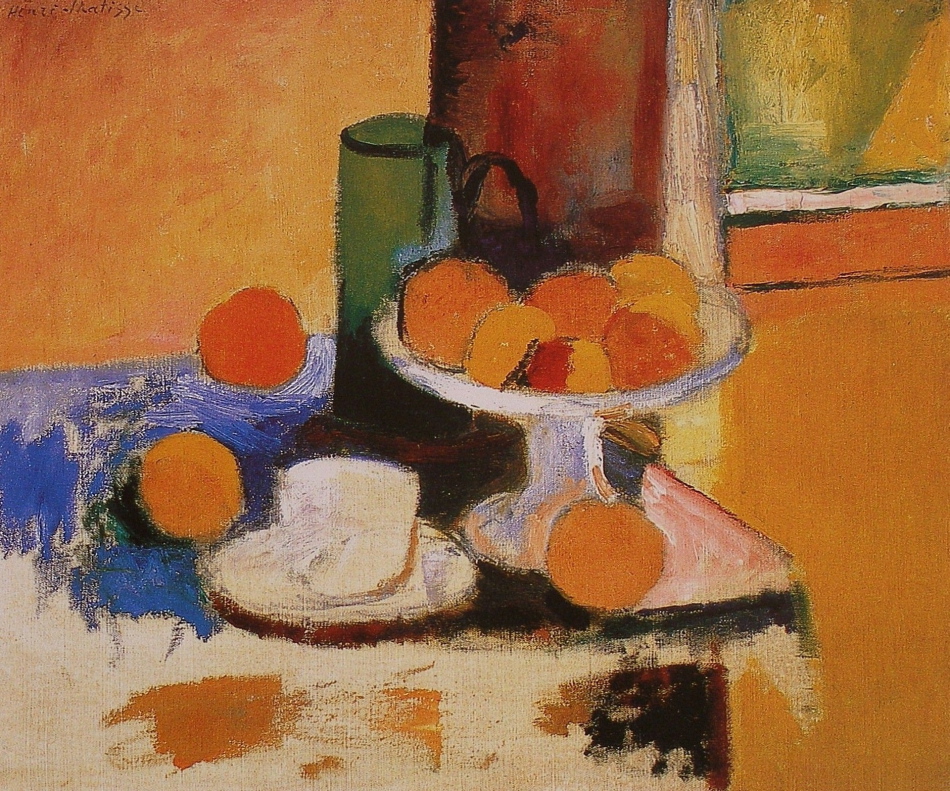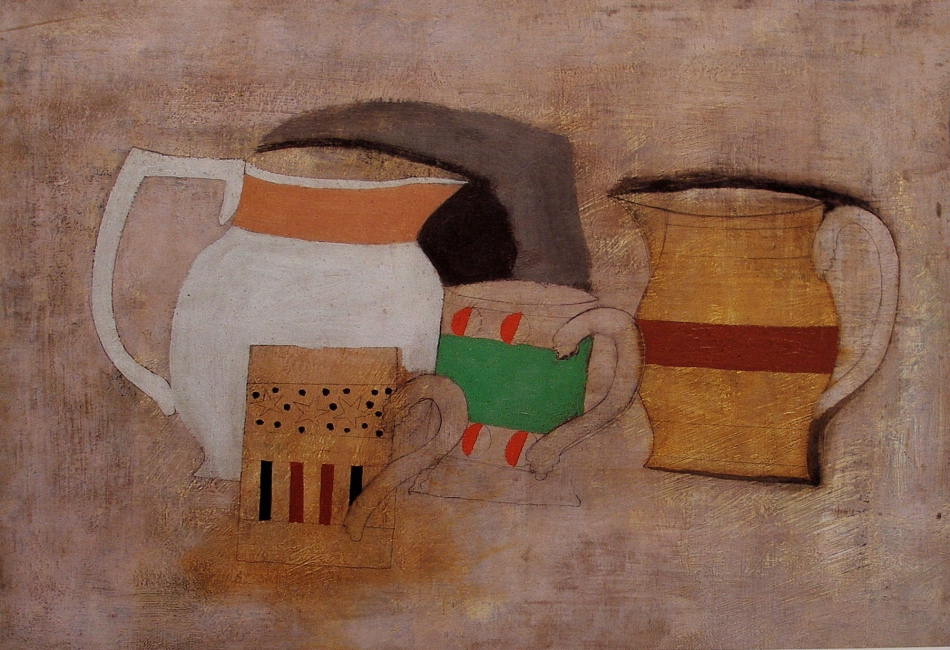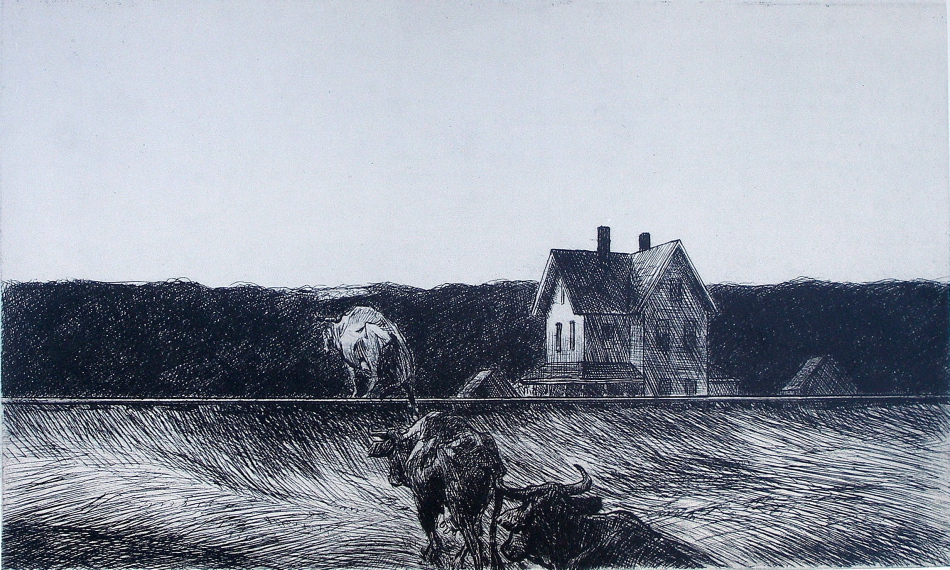This painting has a special place for me as it represents how wonderful it can be when a composition succeeds through the reductive process.
The seed of the painting is to convey movement as purely as possible without any superfluous markings or information. This can be very challenging, for it is not simplification just through omission and reduction. It is striving to have the viewer connect and participate at the primal level. Arranging and rearranging the markings until I respond is genuinely exhilarating. and It always seems to be a circuitous route..
Those small dancing angles are an invitation to engage and they may represent anything the viewer wishes. The colours and textures are open as well, and it is my hope the painting invites a different response with every visit.
I should mention a very important structural consideration. Note how the bottom edge of the light area curves upward at the right. To support this movement I provided a parallel line just above. This is very important for the composition and is meant to be felt more than seen.
I would like to share another detail which I feel is the finishing touch to the painting. When my eye comes to where the blue intrudes slightly into the light texture, gently holding me briefly, I smile. (see detail) 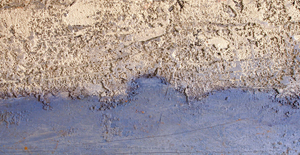 The best notes appear when we are responding to the painting.
The best notes appear when we are responding to the painting.
We artists put ourselves through a great deal to arrive where we initially intended, and to be truthful that place can be elusive.

